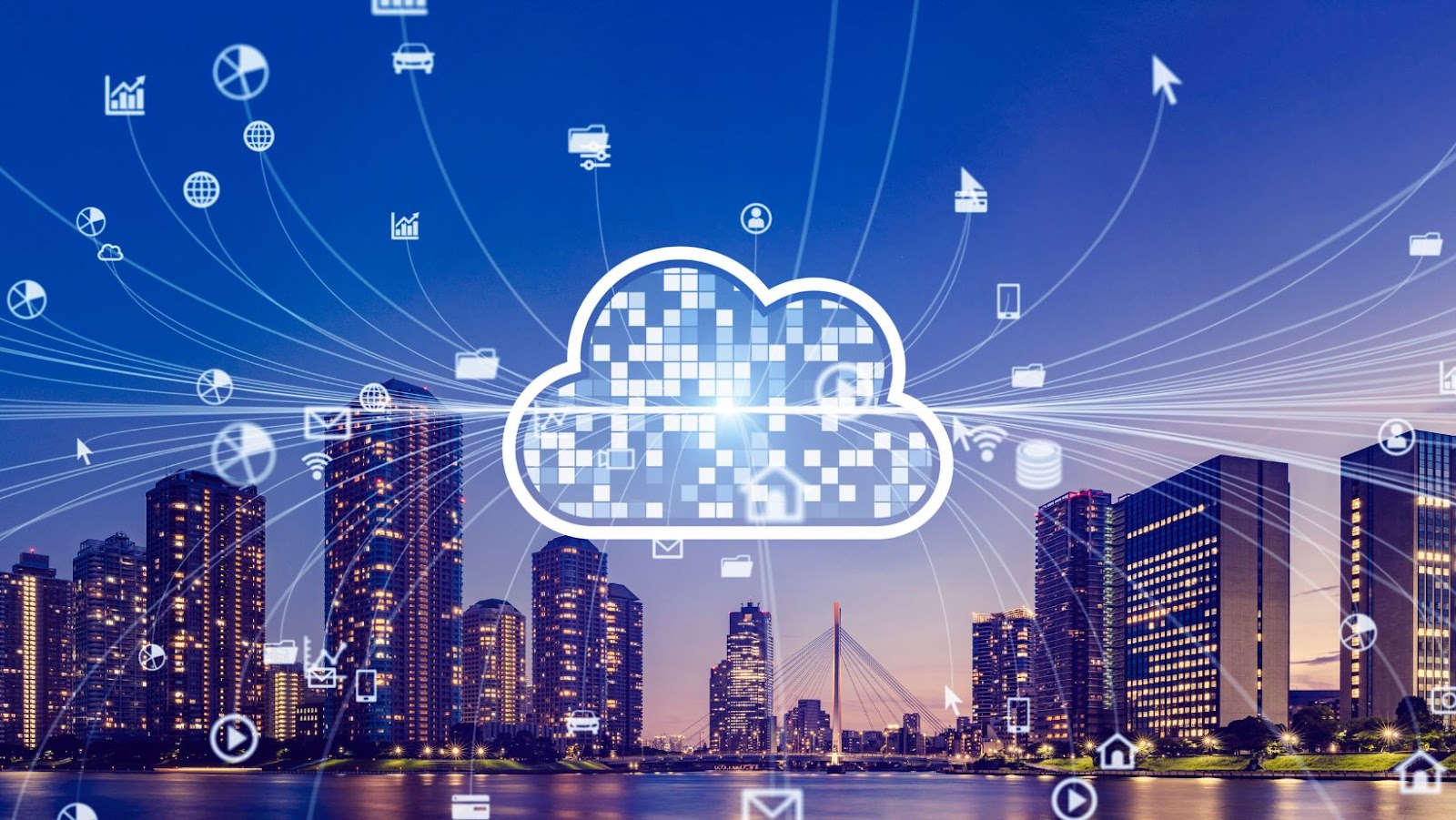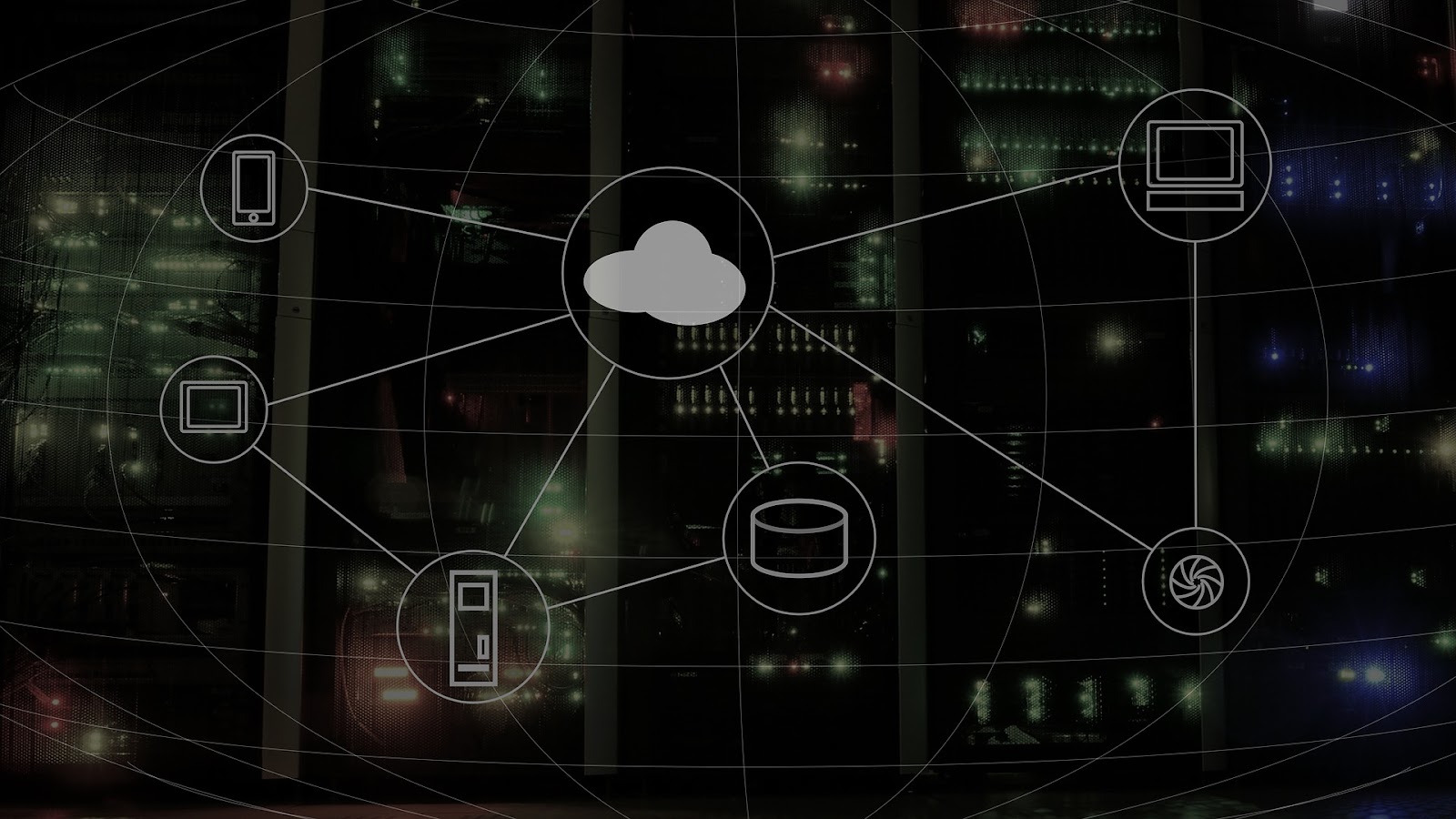Cloud Computing has become an indispensable tool for businesses in recent years. By harnessing the power of the cloud, businesses can access a range of applications, services, and computing resources, which can help them stay ahead of the competition and make informed decisions. As such, businesses increasingly rely on cloud technology to power their digital transformation efforts and remain competitive in the global market.
In this article, we’ll look at how Microsoft is bringing together the world’s leading IT leaders to discuss the role of cloud computing in powering future business growth.
Benefits of Cloud Computing
Cloud computing has become a much-talked-about trend in recent years, and for good reason. Utilizing cloud computing can enable businesses to reduce their total cost of operations, increase availability, and improve security simultaneously. As a result, businesses today are increasingly turning to this type of computing for their core mission functions for the following key benefits:
Cost Savings: By using cloud services, businesses can take advantage of pay as you go pricing models or even free services. This especially benefits businesses that don’t require large IT investments upfront.
Increased Availability: Cloud services allow applications and data stored to be made available on demand from anywhere in the world with an Internet connection. This improves productivity by enabling employees to access needed content anytime, anywhere.
Improved Security: By storing data in built-in virtual private networks (VPN), cloud providers can help protect sensitive corporate data while complying with regulatory requirements such as HIPAA and SOX compliance regulations.
Scalability: Cloud providers also provide customers with scalability options that allow them to dynamically scale up or down depending on their demands at any given time. This allows companies to save money by only paying for the resources they need when they need them.
Increased Mobility: Cloud technology provides users with more flexibility than ever before by allowing users to work from virtually any location on almost any device – including laptops, tablets and smartphones – at any time of day or night. This enables companies to respond faster and remain competitive in today’s rapidly changing business environment.
Challenges of Cloud Computing
While the cloud provides small businesses access to enterprise technology at an affordable cost, it is important to consider some real challenges associated with Cloud Computing. Security is a primary concern as cloud computing involves transmitting data over the Internet. Other challenges include:
-Inadequate Integration of Systems: Cloud Architectures concentrate data in one location, making integrating with internal systems difficult as many IT solutions require training staff, updating integration software and generally can be more costly than expected.
-Lack of Scalability: Companies need the option to scale up or down quickly depending on the demands on their system. The scalability of cloud solutions can differ greatly between providers, leading to disruption and poor customer experience if the right solution is not chosen.
-Reliability Issues: If a service provider’s servers go offline due to natural disaster, malfunctioning or any other related issues, then businesses suffer from sudden lack of access to key systems, software and all associated resources; leading to potential headaches, delays and cancellations costing time & money!
When considering cloud solutions for your business keep these and other potential challenges in mind when researching providers. Working closely with a provider and evaluating their capacity for scalability, support & security should help you select the most suitable provider for your needs.

Artificial Intelligence
Artificial Intelligence (AI) is a rapidly growing field of technology that has the potential to revolutionize the way businesses operate in the digital economy. AI technology can automate tasks and optimize processes, making them more efficient for businesses to carry out operations.
Microsoft recently brought together leading IT industry experts from around the world to discuss the role of AI in powering the future of business growth. Here, we look at the potential impacts that AI can have on businesses and the IT trends they need to be aware of.
Benefits of AI
Adopting artificial intelligence (AI) solutions is gaining momentum for businesses of all sizes. AI technology enables machines to perform tasks requiring human intelligence, learning, problem-solving, and creativity. As a result, companies can realize many benefits by integrating AI into their existing processes. These tangible benefits include increased accuracy, cost savings, enhanced customer experience and accelerated decision-making.
Accuracy: By automating mundane tasks associated with data entry or other administrative duties, organizations can significantly reduce human error through AI technology. AI solutions have been proven to have greater accuracy than humans when processing large amounts of data quickly or engaging in mundane or repetitive jobs.
Cost Savings: By utilizing AI solutions such as Automatic Speech Recognition (ASR), Natural Language Processing (NLP), machine learning and predictive analytics over manual labor employees are no longer needed for certain roles as machines are more efficient and cost effective; this leads to significant cost savings for companies utilizing them.
Enhanced Customer Experience: The integration of AI into customer service departments yields higher customer satisfaction with faster response times due to the automation enabled by the technology. Furthermore, organizations can save money for customers and staff by utilizing this technology.
Accelerated Decision Making: Organizations can utilize Artificial Intelligence solutions such as recommendation engines to help make decisions on how best to communicate with customers and prospects while at the same time improving operational efficiency to grow sales faster than ever before. This rapid decision making allows companies to remain competitive in their respective markets and provide industry leading service levels quicker than traditional methods would allow.
Challenges of AI
Artificial intelligence (AI) is transforming how businesses operate and many organizations are already taking advantage of its powerful potential. However, as with any new technology, organizations should be aware of some challenges associated with AI before investing in it. To ensure successful AI adoption, businesses need to consider these five challenges and plan for them accordingly:
1. Integration difficulties: Companies need to figure out how to incorporate the different systems required for AI into their existing technology stack. Without a well-planned integration strategy, errors and glitches can arise.
2. Data quality and availability: AI relies on data accuracy, completeness and relevance to produce correct results and conclusions from algorithms. Poor quality or unavailable data can lead to misleading, erroneous decisions from AI models that harm business performance.
3. Algorithmic bias: While machine learning algorithms can detect patterns in data quickly, they may also introduce biases into their decision making process due to the selection of datasets used for training or testing them. To create a fair algorithmic model, businesses must be conscious of this issue and regularly audit their models for accountability.
4. Regulatory compliance: As most countries have specific laws covering data protection and privacy, businesses must stay up-to-date with the latest regulations while implementing new automated systems or algorithms. Failing to do this could result in costly fines or legal action if laws are breached unknowingly due to inadequate infrastructure or oversight by employers using AI tools in their processes.
5. Explainability issues: Most existing machine learning models are black boxes that lack explainability as it’s difficult for humans to understand why an algorithm made a certain decision. Businesses should invest time into researching explainable AI frameworks (XAI) like Bayesian methods which offer more transparency by showing how decisions were distilled from input variables during inference time computations — this helps minimize risk human error especially when dealing with sensitive types of data like medical records or financial transactions that require regulatory approval before being used for commercial purposes.
Internet of Things
The Internet of Things (IoT) is a revolutionary technology that is changing how businesses connect with their customers. It is a network of physical devices, such as appliances, cameras, or medical equipment, connected to the internet and can transfer data over a network without human intervention. Today, many businesses are leveraging the advantages of IoT to create smarter, more efficient processes and services.
Let’s look at what IoT offers to business and why it should be considered one of the key IT trends for businesses to be aware of.
Benefits of IoT
The Internet of Things (IoT) is a rapidly growing technology trend transforming how businesses operate, with benefits in areas such as cost savings and increased efficiency. IoT offers many advantages over traditional methods, from improved customer experience and employee engagement to more secure data management and process automation. Here are some of the top benefits of IoT for businesses.
1. More efficient process automation: Automating processes via the Internet of Things reduces the time it takes to complete tasks, allowing business operations to work faster and more efficiently. With IoT-based automation, businesses can streamline workflows, reduce operational costs, and improve data accuracy across multiple departments.
2. Better customer experiences: customers expect a high degree of personalization when interacting with companies. IoT technologies enable organizations to provide tailored services that deliver personalized experiences that lead to improved customer satisfaction and loyalty.
3. Increased employee engagement: IoT technology can help increase employee engagement by improving job satisfaction and enabling employees to achieve their goals faster through automated processes enabled by connected devices or sensors in different systems or locations.
4. Enhanced security: With IoT systems in place, businesses can monitor their networks for suspicious activities more efficiently than ever before, ensuring better security for data as well as physical assets such as warehouses, inventory etc., thus keeping all business operations safe from outside threats such as ransomware attacks or unauthorized access attempts.
5 Improved margins & cost savings: By leveraging the power of connected devices and real-time data gathered from various sources with different sensors or analytics solutions,. companies can gain real-time insights into their operations resulting in reduced costs incurred due to product failures or delays in delivery times by trying out new strategies based on accurate data analysis findings which further result in improved margins for the organization.
Challenges of IoT
The Internet of Things (IoT) is transforming businesses across many industries, introducing new hurdles and challenges to those leveraging its power. Despite the benefits of using the IoT, it can pose several complications. Here are some of the primary challenges posed by this ever-growing technology.
Security: IoT systems present a substantial security risk, often deployed over large networks with many interconnected devices vulnerable to malicious actors. Companies must create processes and implement safeguards to address these threats. Additionally, IoT vendors need to ensure that their products have the latest security features to enable users to safely interact with their networked systems.
Data management: There is an immense amount of data generated by IoT devices and applications—from sensors, beacons, recorders and more—and this data needs to be managed properly to be used effectively. Companies should have strategies for storing data securely, understanding its analytical insights and ensuring that regulations are followed correctly when handling customer data.
Integration: As various connected devices become commonplace in businesses today, companies must find ways to integrate them without compromising overall system performance and reliability. Doing so requires an effective interface between diverse components; if not done correctly it can increase complexities while hindering the system’s success as a whole.
Privacy concerns: As customers and employees become increasingly aware of how their data is being handled (or misused) by companies worldwide, privacy is becoming a greater concern for businesses utilizing the IoT for competitive advantage or overcoming operational obstacles. Therefore, organizations must identify how best to protect customer data and prevent unauthorized access while still allowing services or services usage metrics collected from customers to be utilized within analytics tools or marketing automation platforms.

Cyber Security
With the increasing prevalence of cyber attacks, cyber security has become one of the most important IT trends businesses must understand and prepare for. As technology advances and businesses become more globalized, cyber threats have grown ever-more sophisticated and the need to protect data and systems from malicious actors is paramount.
Microsoft recently convened a meeting of global IT leaders to discuss the role of IT in fuelling future business growth, focusing heavily on the need for cyber security. In this article, we will look at the various elements of cyber security that businesses need to consider when seeking to protect their data and systems.
Benefits of Cyber Security
Businesses of all sizes and across various industries understand the importance of cyber security in protecting their organization’s sensitive information. Cyber security helps protect your data from unauthorized access and ensures that confidential business information is kept secure and complies with regulatory requirements. In addition, there are a variety of benefits that businesses can enjoy when implementing appropriate cyber security solutions for their operations.
First and foremost, cyber security helps to protect businesses from external threats such as cyber-attacks, malware, and data breaches. Properly implemented cyber security tools can help to detect abnormal behavior on a network, identify vulnerable systems and endpoints, control access to sensitive information, alert staff of potential threats, provide preventive measures against malicious attacks, and ensure that any suspicious activity is reported immediately. Using strong passwords and implementing two-factor authentication (2FA) also helps prevent unauthorized access to important systems. By following these best practices, businesses can drastically reduce the chances of a breach or attack while ensuring confidential information remains secure.
Second, having the right cybersecurity protocol allows businesses to assert greater compliance with relevant Data Privacy & Protection regulations (DPPR). Not only does this include GDPR or CCPA but depending on the size & geographic scope of your operations additional vendor/partner certifications may also be required for GDPR/ CCPA compliance depending on local regulations where data (including personal user information) is collected & stored. In addition, compliance with DPPRs help build confidence among customers & partners in sharing their data with your business which protects organizations from punitive fines & other measures due to non-compliance. Furthermore, adopting a good cybersecurity posture also lowers operational costs by limiting digital fraud damages from successful breaches, reducing human oversight & reporting costs associated with patching identified vulnerabilities, and consistently building trust within its customers.
Finally, sophisticated Cybersecurity solutions provide backend support for centralized networks, allowing businesses to manage its corporate assets more efficiently digitally and even physically using biometrics to enable/disable access controls. Employees can use appropriate authentication technologies eliminating time spent resetting passwords while reducing risk of identity thefts. This enables IT teams to assign permission control access levels, granting only privileged users higher permission control levels while normal users have limited capabilities, minimizing risk. Additionally, remote accessibility through VPN’s, digital signatures, 2FA authentication to name a few helps remote workers securely connect over networks, helping to improve updated collaboration between remote team members reducing total cost ownership. Further, integration between third party applications and SAAS services, helping address regulatory mandates through continuous system monitoring, improves performance throughout the organization.
Challenges of Cyber Security
The challenge of cyber security is a growing concern for businesses worldwide. As a result, companies are being forced to rethink their IT infrastructure and how they protect their data from hackers and other malicious actors. To ensure the privacy and security of their customers, companies must understand the current cyber security landscape, common security threats and emerging trends.
Phishing is one of cyber criminals’ most commonly used tactics to access valuable information or data. Cybercriminals can trick individuals into providing personal details or financial information by sending malicious links and posing as legitimate organizations or services. Therefore, companies must remain vigilant regarding phishing threats or scams to mitigate the risk for their business and customers.
Identity fraud is another common issue businesses must take seriously to protect customer details and ensure trust in their products/services. As a result, many organizations have adopted multifactor authentication to protect user accounts against unauthorized access. This involves using a combination of factors such as passwords, pins, biometrics, tokens, etc., to verify users when they access important data across multiple devices/platforms.
Advanced persistent threats (APT) are also becoming more pervasive among large enterprises worldwide. As a result, cybersecurity teams must have the right tools and technology to detect suspicious activities that could compromise business systems or networks. Popular APTs, such as malware and ransomware have caused large scale disruption for companies resulting in hefty fines for firms that fail to turn around threats quickly enough. Prevention is key for APTs since many attacks take months before traditional cyber defenses like antivirus software solutions detect them.
As new technologies become available, so do new measures of security that businesses must consider including artificial intelligence (AI), Internet of Things (IoT) devices, blockchain technologies etc.. In addition, businesses should also educate their employees on best practices in cybersecurity awareness such as recognizing phishing scams or implementing proper protocols when transferring files containing sensitive information. With increased understanding, organizations can ultimately work together towards creating an environment where secure networks can flourish.

Microsoft brings together global MNC IT leaders to discuss role of IT in powering future business growth
Microsoft recently organized an event with global MNC IT leaders to discuss the role of IT in powering future business growth. This event brought together tech professionals to identify emerging trends and discuss strategies to use IT to enable business growth. In this discussion, Microsoft emphasized the importance of staying up-to-date with the latest IT trends to ensure business success.
Let’s look at some IT trends businesses should be aware of.
Microsoft’s Solutions for IT Challenges
As technology evolves and business processes transform, Microsoft provides substantial solutions to address IT challenges while enabling organizations to maximize the opportunities they bring.
Microsoft’s cloud products (Azure, Office 365, Dynamics 365) enable organizations to securely store and share updates and data within a company, offer personalization experiences through AI and Cognitive Services, access business solutions quickly with the help of a low-code platform such as PowerApps, ensure constant communication among employees, partners and customers with the help of Skype for Business and serve modern web workloads with exceptional performance on Microsoft Internet Information Services (IIS).
Besides these core technologies, many other Microsoft solutions can drive organizational innovation. For example, Microsoft Advanced Threat Analytics improves an organization’s security posture in real-time by implementing single sign-on for secure authentication into corporate applications using Azure Active Directory Premium. The Microsoft Cloud App Security solution aids IT operations teams to monitor suspicious activities in SaaS apps used inside their network. Additionally, Windows Autopilot enables IT operations teams to reduce their workload while streamlining deployment process of applications & devices even though they are scattered globally across multiple locations.
The rapidly evolving workplace is aspiring organizations to develop digital transformation strategies that could maximize ROI on their investments depending on the respective industry or vertical they operate in. Companies must understand how technologies like Artificial Intelligence can be leveraged along with Big Data Analytics & Cloud Computing solutions by integrating them heterogeneously with core systems like SAP or Oracle platforms. This often requires DevOps culture involving the active collaboration between vendors & customers that embrace current trends of development paradigms which develops contemporary solutions addressing both basic & advanced requirements which can secure their future relevancy among its customer base as well as its growth targets ambitiously envisioned by stakeholders at every tier of operation hierarchy.
Microsoft’s Collaboration with Global MNC IT Leaders
Microsoft is collaborating with several of the world’s leading IT companies to help them power their future business growth. This collaboration continues to expand globally and includes regional and market-specific partners such as Dell, Intel, Google and IBM.
The partnership has enabled Microsoft to develop products and services that meet the ever-changing needs of IT professionals and executives worldwide. Microsoft also works with MNCs to provide custom cloud solutions tailored to their specific goals such as Cloud Central, their new enterprise cloud platform.
Microsoft’s collaboration with MNC IT leaders enables them to bring innovative products and services that can accelerate the digitization transformation process for firms. In addition, with access to decades of technological innovation and experience gained by global technology giants in areas such as data centers and SaaS, Microsoft can capitalize on this knowledge and insight when providing solutions for MNCs’ data management needs.
Moreover, having established an extensive network of top-tier IT partners enables Microsoft to quickly identify skills gaps among businesses while providing analytical insights into larger trends in the industry concerning how customers use technology today. This valuable intelligence allows them to position their products strategically so that customers can receive the most comprehensive return on their investments with minimal downtime or performance impairment due to compatibility issues or incompatibility between hardware/software components from different manufacturers or systems.
